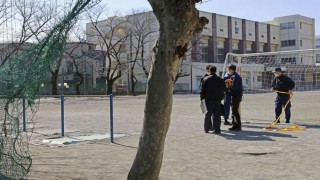Loading
Search
▼ A String Of Gruesome Cat Killings Has This Japanese City On Edge
- Category:Other
The first grim discovery came when a woman found the severed head and paws of a brown speckled cat as she walked along the banks of the Arakawa River in Saitama City, Japan. Days later, what police believe was the rest of the body turned up on the grounds of an elementary school.
Within 10 days, by the end of February, members of the public had discovered two more mutilated cat carcasses, one in a field and another on the side of a small town road.
These gruesome acts may not have involved human victims, but they have nevertheless left this city in the Greater Tokyo area on edge.
Local schools are asking teachers to escort children home and advising them to walk in large groups; police have stepped up patrols, according to Japan’s public broadcaster NHK.
The killings have stirred uncomfortable memories in Saitama, which in recent years jailed a cat killer who tortured several animals and posted videos of his actions online.
They have also raised the specter of the Kobe City child murders of the 1990s, when a 14-year-old boy with a history of committing acts of animal cruelty killed two children, ages 10 and 11, and injured three others.
The killings also come at a disconcerting time for schools in the area. Earlier this week, a teacher at a junior high school in Toda was reportedly stabbed by a student, sparking an evacuation.
A Saitama police spokesperson told CNN that they had launched animal cruelty investigations and were looking into whether the various cat killings were linked. It is a crime to kill or injure animals in Japan – punishable with prison terms of up to five years or fines of around 5 million yen ($36,600).
One woman in her 80s told NHK she felt “scared and uncomfortable” at hearing the news about the cat killings – but the concerns go beyond those raised over animal welfare.
In the wake of the killings, various experts have warned that in some minds animal cruelty can act as a gateway to even more heinous crimes.
“Normally, criminal acts and cruelty are hidden, but daring to show them may be a form of self-expression,” Kenji Omata, a psychology professor from Surugadai University, told NHK.
Omata referenced both the case of the earlier cat killer in Saitama prefecture and noted “there was also animal abuse in the Kobe City child serial murder case.”
“I am very concerned about how long similar incidents will continue and whether people will be harmed,” Omata said.
Kim J. McCoy, a barrister who founded the Hong Kong Animal Law and Protection Organisation, warned that some cases of animal cruelty “evolved into more serious offenses against humans.”
“There is empirical evidence to support the direct correlation between those who commit animal abuse and those that commit other more violent crimes on people,” McCoy said.
Even when the violence is confined to animals, there is still a need to act, McCoy added.
“Animals are vulnerable,” McCoy said. “They deserve and require proper protection from harm.”
Within 10 days, by the end of February, members of the public had discovered two more mutilated cat carcasses, one in a field and another on the side of a small town road.
These gruesome acts may not have involved human victims, but they have nevertheless left this city in the Greater Tokyo area on edge.
Local schools are asking teachers to escort children home and advising them to walk in large groups; police have stepped up patrols, according to Japan’s public broadcaster NHK.
The killings have stirred uncomfortable memories in Saitama, which in recent years jailed a cat killer who tortured several animals and posted videos of his actions online.
They have also raised the specter of the Kobe City child murders of the 1990s, when a 14-year-old boy with a history of committing acts of animal cruelty killed two children, ages 10 and 11, and injured three others.
The killings also come at a disconcerting time for schools in the area. Earlier this week, a teacher at a junior high school in Toda was reportedly stabbed by a student, sparking an evacuation.
A Saitama police spokesperson told CNN that they had launched animal cruelty investigations and were looking into whether the various cat killings were linked. It is a crime to kill or injure animals in Japan – punishable with prison terms of up to five years or fines of around 5 million yen ($36,600).
One woman in her 80s told NHK she felt “scared and uncomfortable” at hearing the news about the cat killings – but the concerns go beyond those raised over animal welfare.
In the wake of the killings, various experts have warned that in some minds animal cruelty can act as a gateway to even more heinous crimes.
“Normally, criminal acts and cruelty are hidden, but daring to show them may be a form of self-expression,” Kenji Omata, a psychology professor from Surugadai University, told NHK.
Omata referenced both the case of the earlier cat killer in Saitama prefecture and noted “there was also animal abuse in the Kobe City child serial murder case.”
“I am very concerned about how long similar incidents will continue and whether people will be harmed,” Omata said.
Kim J. McCoy, a barrister who founded the Hong Kong Animal Law and Protection Organisation, warned that some cases of animal cruelty “evolved into more serious offenses against humans.”
“There is empirical evidence to support the direct correlation between those who commit animal abuse and those that commit other more violent crimes on people,” McCoy said.
Even when the violence is confined to animals, there is still a need to act, McCoy added.
“Animals are vulnerable,” McCoy said. “They deserve and require proper protection from harm.”
- March 5, 2023
- Comment (0)
- Trackback(0)


